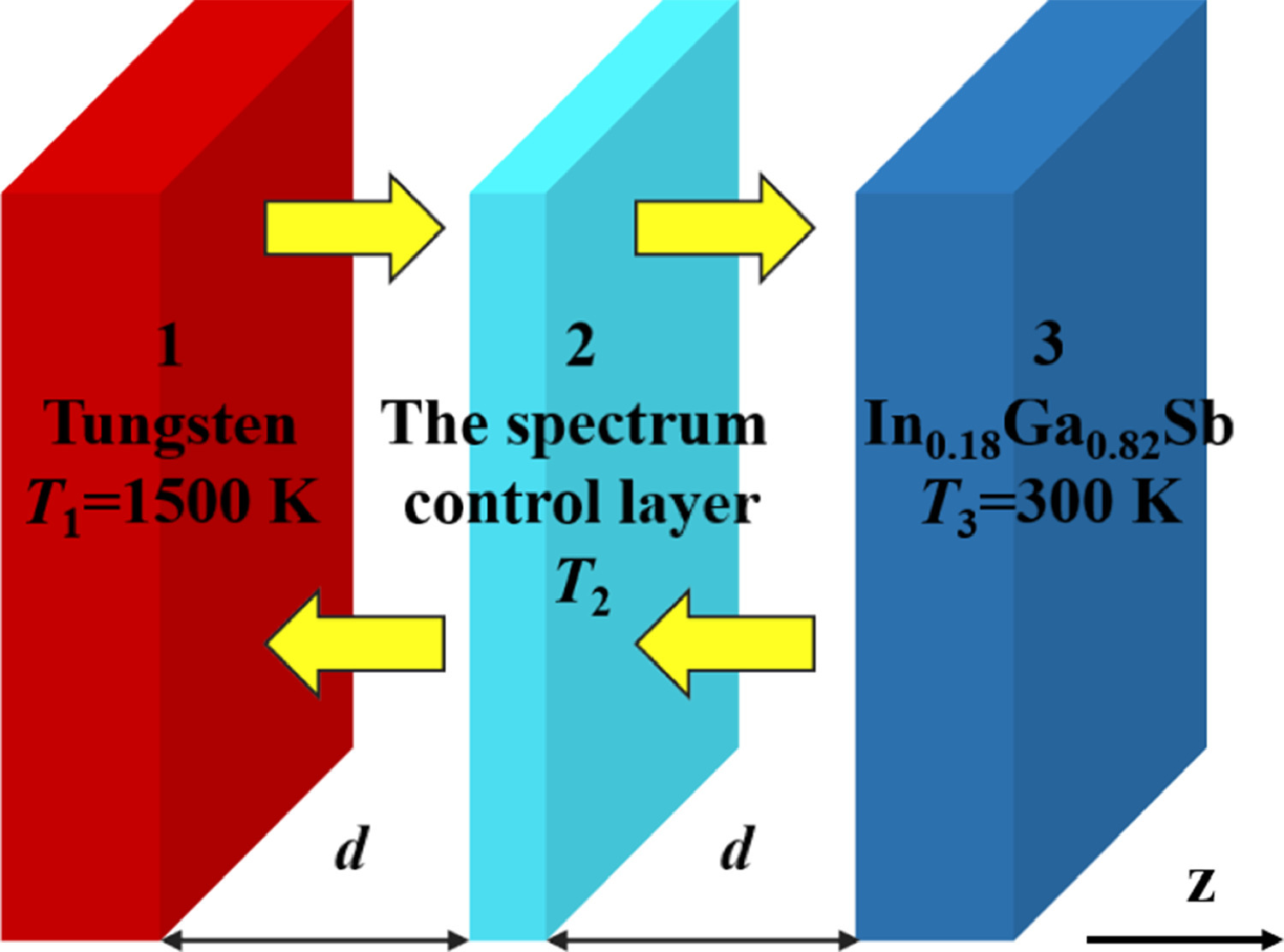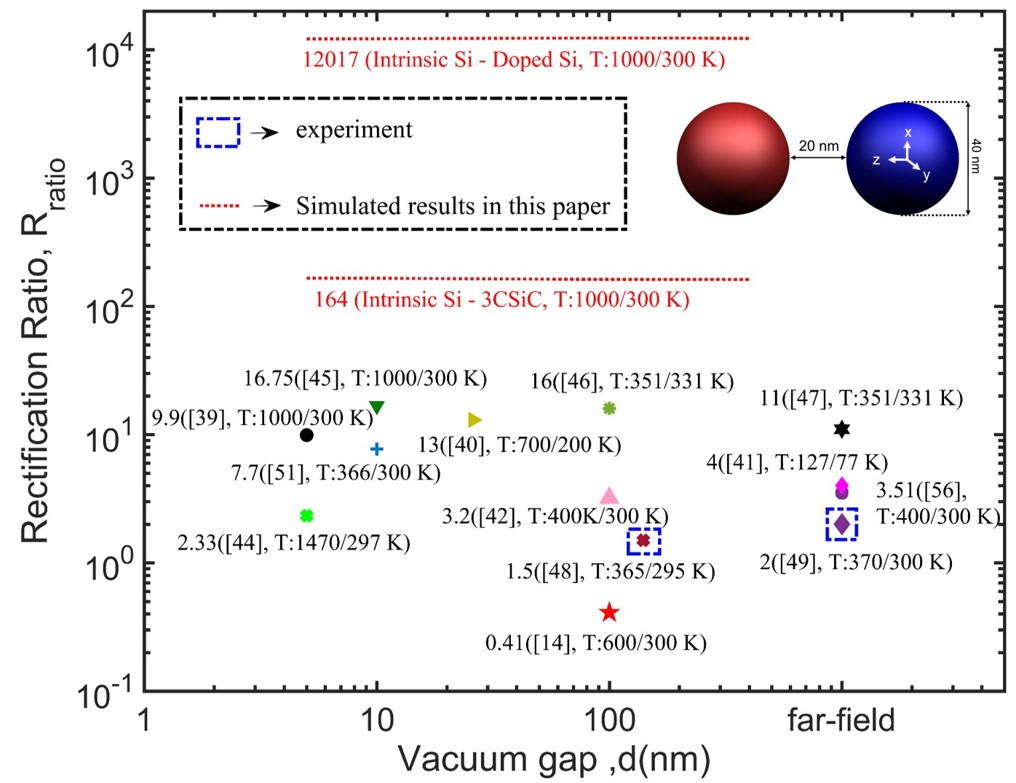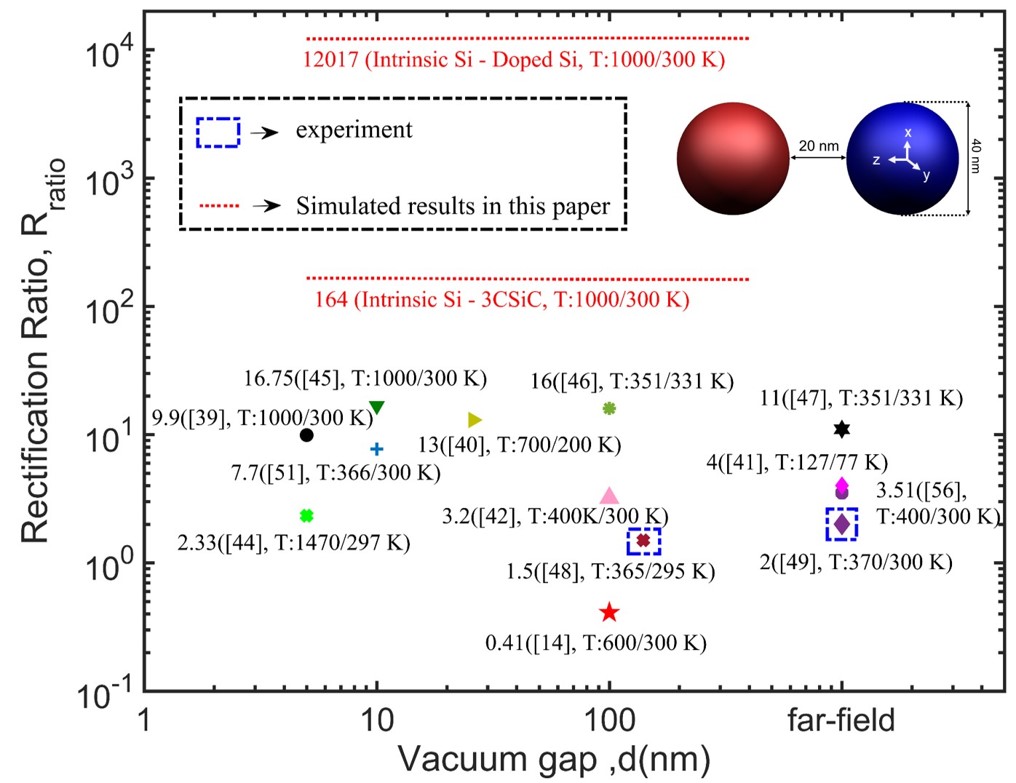Nanoscale Thermal Devices
Advances near-field radiative heat transfer applications, dramatically enhancing energy efficiency in thermal rectifiers and thermophotovoltaic systems.
Overview
Thermal radiation, a ubiquitous natural phenomenon, occurs when any object above absolute zero temperature emits electromagnetic waves. Historically, this emission was thought to adhere strictly to Planck’s law, modified by surface emissivity. Yet, the past two decades of experimental research have unveiled a remarkable finding: when an object’s geometric dimensions are on par with the characteristic wavelength of its thermal radiation, the resulting radiative energy exchange can significantly surpass the confines of Planck’s blackbody law. This breakthrough leads us into the realm of near-field radiative heat transfer, a field with burgeoning applications in energy transmission technologies such as near-field thermophotovoltaics and thermal rectifiers.

Thermal Rectifiers: Innovating Heat Flux Manipulation
Our research introduces an innovative design for achieving ultrahigh thermal rectification using near-field thermal radiation between nanoparticles. Utilizing intrinsic silicon paired with a dissimilar material, we theoretically demonstrate a record-high rectification ratio exceeding 10,000. This advancement is primarily due to the significant increase in the imaginary part of the dielectric function of intrinsic silicon, which is induced by thermally excited electrons at elevated temperatures. Our investigations also extend to the effects of gap distances, materials, and configurations of nanoparticles. The insights gained could revolutionize the design of efficient thermal diodes, thermal transistors, and other thermotronic devices, underscoring the potential of nanoscale heat flux manipulation in modern electronics and information processing industries. (Wen et al., 2019)
Thermophotovoltaics: Enhancing Energy Conversion with Three-Body Structures
In a separate study, we explore the efficacy of three-body structures in thermophotovoltaic systems, which have traditionally been overlooked in enhancing near-field radiative energy conversion performance. Our proposed system consists of a tungsten emitter, a metallic spectrum control layer, and an In0.18Ga0.82Sb photovoltaic cell. Through meticulous optimization of the spectrum control layer, we significantly boost both the efficiency and output power—from 24.7% and 1.88×10^5 W/m^2 to 35.3% and 3.62×10^5 W/m^2, respectively—at a minimal gap distance of 10 nm. The improvement is attributed to the excitation of coupled surface plasmon polaritons within the metallic layer. This finding not only enhances our understanding of near-field mechanisms but also opens new pathways for deploying three-body structures in high-performance energy conversion systems. (Dang et al., 2021)



